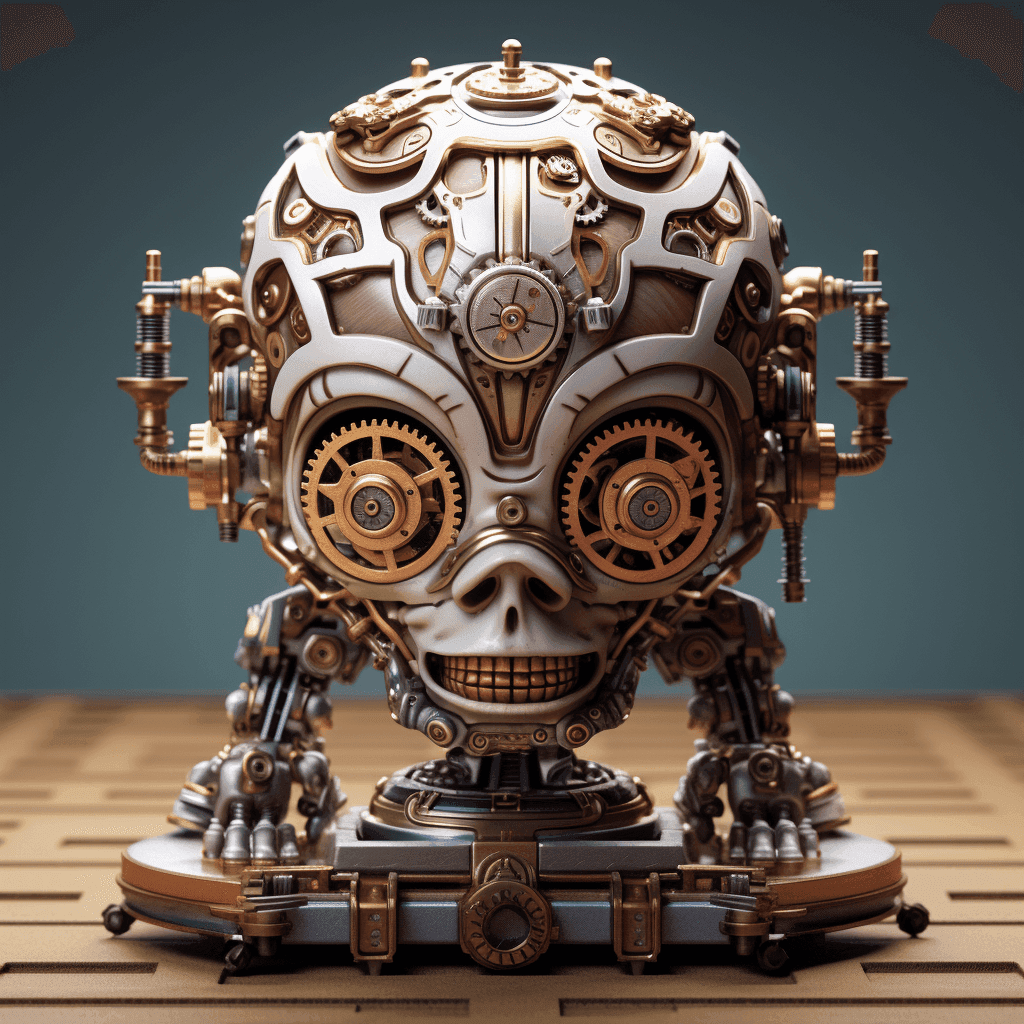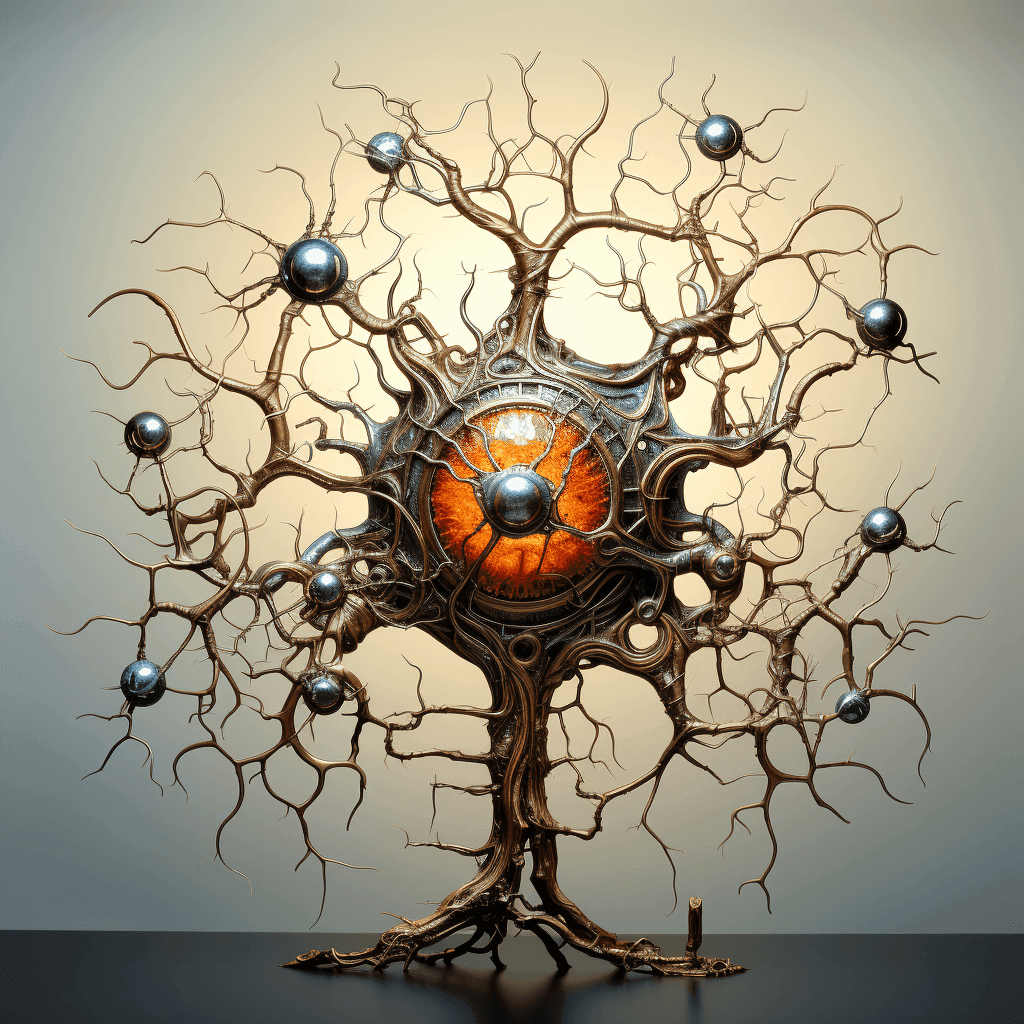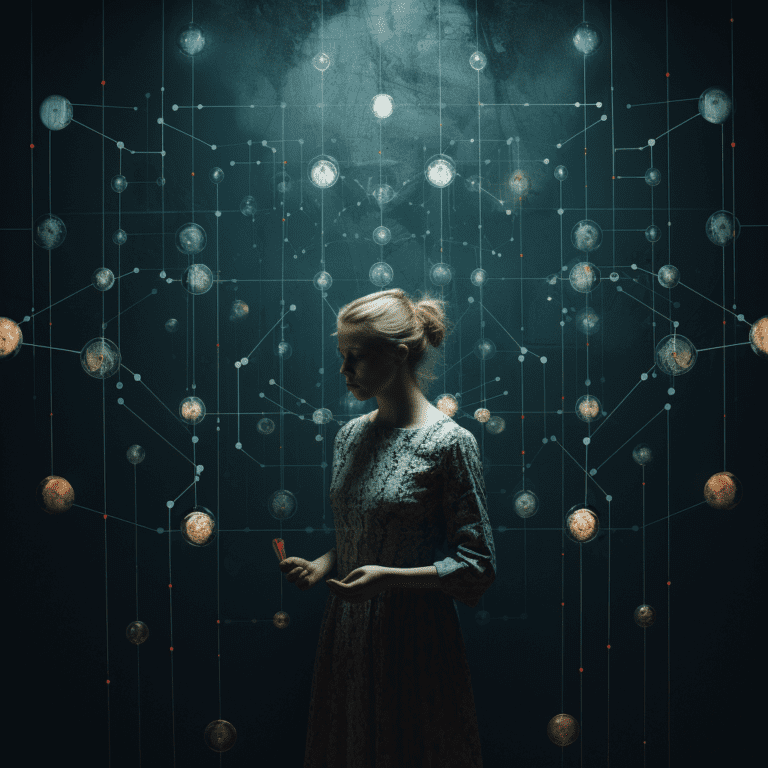Neural Networks Simplified

Introduction
Welcome to the World of Neural Networks!
Imagine you’re an explorer, and you’ve just stumbled upon an ancient treasure map. The map is filled with intricate patterns and symbols. You’re excited but also puzzled. How do you decipher this map? Well, neural networks are like master code-breakers that can help you unravel the mysteries of this map!
But wait, what are neural networks? Let’s dive into this fascinating world.
The Brain: Nature’s Marvel
Neural networks are inspired by none other than our very own brain! Our brain is a complex web of billions of neurons, all working together to help us think, learn, and make decisions. Neural networks try to mimic this incredible system.
Fun Fact: The word ‘neuron’ in neural networks is inspired by the neurons in our brain!
Want to know more about AI, the big umbrella under which neural networks reside? Check out Understanding AI in Simple Terms.
And if you’re curious about how neural networks fit into the grand scheme of machine learning, don’t miss What is Machine Learning? A Simple Guide.
Neural Networks Demystified: Brain-Inspired Computing
Cracking the Code of Neural Networks
So, what exactly is a neural network? Imagine a group of master detectives, each specializing in different types of clues. They work together to solve a mystery. In the world of computing, a neural network is a group of artificial neurons that work together to find patterns and make sense of information.
The Learning Adventure
Just like how we learn from experience, neural networks learn from data. They’re like sponges, soaking up data, and figuring out the patterns. When a neural network makes a guess and it’s wrong, it’s like, “Oops! Let me adjust my detective glasses and try again.” It keeps tweaking its approach until it gets really good at making predictions.
A Miniature Brain Inside the Computer
Think of neural networks as a miniature version of the human brain inside your computer. While not as complex as the human brain, they try to mimic how our brain’s neurons fire and communicate with each other. The beauty is in how they adapt and learn from the data they are fed, just like how we learn from our experiences.
Isn’t this exciting? Neural networks are like having a team of brainy detectives right inside your computer, ready to crack the codes and solve mysteries!
In the next section, we’ll explore the different types of neural networks and how they’re like different kinds of detectives specializing in various mysteries. Stay tuned!
The Learning Journey of Neural Networks

Making Predictions: The Detective’s First Guess
Imagine a detective trying to solve a mystery. They make an initial guess, but it might not be correct. Similarly, neural networks make predictions by taking in data, processing it through layers of artificial neurons, and coming up with an output. This is like their first guess at solving the mystery.
Fine-Tuning the Detective Glasses: Adjusting Connections
But what if the guess is wrong? The neural network goes, “Let’s adjust our strategy.” It changes the connections between its artificial neurons, trying to get closer to the right answer. It’s like the detective adjusting their glasses to see the clues more clearly.
The Feedback Loop: Learning from Mistakes
This process of making predictions, checking how far off they are, and adjusting connections is repeated many times. It’s a feedback loop! With each iteration, the neural network gets better at making accurate predictions, just like a detective becoming more skilled at solving mysteries.
The Different Flavors of Neural Networks
A Buffet of Neural Networks and Neurons
Just like there are different types of detectives, there are different types of neural networks! Each type has its own specialty and is good at solving certain kinds of problems.
Recurrent Neural Networks (RNNs): The Storytellers
Imagine a detective who is an expert in solving mysteries that have a sequence, like a story. That’s what Recurrent Neural Networks (RNNs) are like! They are great at dealing with sequential data. They remember the past to make sense of the present. RNNs are like smart storytellers.
Convolutional Neural Networks (CNNs): The Art Detectives
Now picture a detective who is an expert in art. They focus on specific parts of a painting to understand the whole picture. That’s what Convolutional Neural Networks (CNNs) do! They are excellent for image recognition. They focus on specific features of an image to understand what it represents.
Neural Networks and Reinforcement Learning: A Comparison
Understanding Reinforcement Learning: Learning Through Rewards
Imagine training a dog. You give it treats when it does something good. That’s reinforcement learning! It’s about learning through rewards and penalties.
The Distinct Paths of Learning and Applications
Neural networks focus on finding patterns in data, while reinforcement learning is about making decisions that maximize rewards. In reinforcement learning, an agent learns to perform actions based on the environment to maximize some notion of cumulative reward.
In neural networks, especially supervised learning, there’s a clear goal – to make predictions or classifications based on examples. In reinforcement learning, it’s more about learning from the consequences of actions.
So, while both neural networks and reinforcement learning involve learning and adapting, they have distinct methodologies and applications. It’s like having different genres of detectives, each with its own style of solving mysteries!
Practical Applications of Neural Networks
Real-World Magic: Neural Networks in Action
Let’s take a magic carpet ride through the real world and see where neural networks are making a splash:
- Music Composition: Neural networks are being used to compose new music in various genres. They analyze patterns in existing compositions and create new melodies and harmonies that are pleasing to the ear.
- Detecting Plant Diseases: In agriculture, neural networks are used to analyze images of plants to detect diseases early. This helps farmers take timely action to protect their crops.
- Handwriting Generation: Neural networks can mimic a person’s handwriting style. By analyzing a sample of a person’s handwriting, they can generate new text that appears as if the person wrote it by hand.
- Fashion Design: Neural networks are being used in the fashion industry to create new designs. They analyze current trends and colors, and create designs that are likely to be popular.
- Creating Art: Neural networks are not just for science; they’re artists too! They can be trained to create new pieces of art by learning styles and techniques from existing artworks.
- Language Translation for Lesser-Known Languages: While translating common languages is nothing new, neural networks are helping to translate lesser-known languages and dialects that were previously not supported by translation services.
- Customized Cooking Recipes: Neural networks can generate cooking recipes tailored to your taste preferences and dietary restrictions. They learn from a vast database of recipes and create new combinations of ingredients.
- Wildlife Conservation: Neural networks are being used to analyze camera trap images in wildlife conservation, helping to identify and track animal species, and understand their behavior for conservation efforts.
- Virtual Interior Design: Neural networks can help you redesign your living space virtually. By analyzing images of your room, they can suggest furniture arrangements and decorations that will optimize the space.
- Personalized Fitness Plans: Neural networks can create personalized fitness plans based on an individual’s health data, goals, and preferences. They can even adapt the plan as the person progresses.
These examples showcase the versatility and creativity of neural networks in various fields beyond the usual applications.
Revolutionizing Industries: The Neural Network Effect

From healthcare to finance, neural networks are revolutionizing industries. They’re not just solving mysteries; they’re creating new possibilities and transforming how we live and work. The impact is profound, as these brain-inspired networks bring intelligence and automation to a plethora of applications.
Conclusion
Wrapping Up the Neural Network Saga
We embarked on an epic journey through the realm of neural networks. From understanding their brain-inspired roots to witnessing their magic in the real world, it’s been a thrilling adventure.
Gazing into the Crystal Ball: The Future
Neural networks are like wizards constantly learning new spells. As they evolve, we can expect even more astonishing applications. Whether it’s solving complex scientific mysteries or creating art, the possibilities are boundless.
Your Quest Awaits
So, what are you waiting for? The world of neural networks is vast and exciting. Whether you’re an aspiring data scientist or just curious, there’s a treasure trove of knowledge waiting to be discovered. Embark on your quest and unlock the mysteries of neural networks!
Frequently Asked Questions (FAQ)
Q: How do you explain neural networks to a child?
A: Imagine your brain is like a detective that solves puzzles by finding patterns. Neural networks are like little detective brains inside computers, helping them solve their own puzzles!
Q: What is the basic example of neural networks?
A: Think of a photo app that can tell if a picture has a cat or a dog. Neural networks help the app recognize the patterns that make cats look like cats and dogs look like dogs.
Q: How do neural networks work step by step?
A: Neural networks take in data, like clues, and pass them through layers of artificial neurons, like detective’s magnifying glasses. They make a guess, see how close it is to the right answer, and adjust their magnifying glasses to get better at guessing.
Q: What is the difference between AI and neural network?
A: AI is like a detective agency with all kinds of detectives. Neural networks are a special type of detective within the agency that’s really good at finding patterns in data.
Q: What are the 3 components of the neural network?
A: The three main components are the input layer (where the network takes in data), the hidden layer (where the magic happens and patterns are found), and the output layer (where we get the final answer or prediction).
Q: Are neural networks hard to learn?
A: They can be tricky, like learning detective skills, but with the right resources and practice, anyone can learn about neural networks!
Q: What is the most simple neural network?
A: The simplest neural network is called a Perceptron. It’s like a detective who only uses a single magnifying glass to solve very simple puzzles.
Q: What should I learn before learning neural networks?
A: It’s good to know some basic math, like a detective needs to know how to read a map. Also, understanding some programming can be helpful, like knowing
the detective’s secret codes.
Q: What is the difference between neural network and deep learning?
A: Neural networks are like detectives with magnifying glasses, while deep learning is like giving those detectives even more powerful telescopes. Deep learning uses neural networks with lots of layers (that’s why it’s deep!) to solve more complex puzzles.
Q: Are neural networks supervised?
A: They can be! Supervised neural networks are like detectives who are given clues along with the answers to learn from. But they can also be unsupervised, where they try to find hidden patterns in the clues without knowing the answers.
Q: Are neural networks machine learning?
A: Yes! Neural networks are a type of machine learning. They’re like a special detective tool that machine learning systems use to find patterns and solve mysteries in data.
And there you have it! A treasure chest of knowledge about neural networks. Keep that curiosity alive, and never stop exploring!






